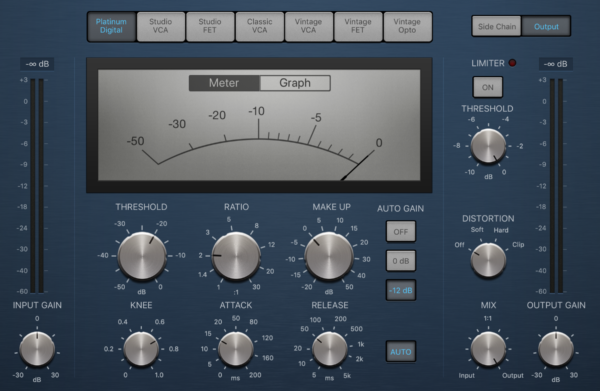 Hi guys,
Hi guys,
I know that many of you are not technically focused on the music production process, which is totally fine if you just start out as it just gets super overwhelming…
I know, I know…I’ve been there too, we all start somewhere…however, I believe that here and there you really should learn at least some super basics about the technical side of the music creation process, at least basic mixing, mastering, etc.
As I started to build more and more resources for people like you, starting out composers and music producers, I recently came across a super confusing topic: compression – and to be more precise: different types of compressors…there are actually six of them!
So I thought: Well, I’ll write a straight forward guide about it…so here it is…if YOU are the kind of person who still is confused what a FET compressor is, or why it is sometimes better to use an optical compressor, instead of a VCA, the following lines give you a basic overview…
First things first: A compressor is a tool that tames peaks (reduces the dynamics) of an incoming signal to allow you to have an overall more balanced-out performance. There are many scenarios why and how you can use a compressor, however, the main purpose (in the 50s) was to create a tool that helped the recording engineers to not ride the volume faders all the time during a performance, as music can be extremely dynamic.
As I have said before, during the past 70 years the recording industry came with many different types of compressors…and these are:
VCA – Voltage Controlled Amplifier
- The VCA compressors are the most versatile of all types of compressors
- Most used type of compression
- They are fast, smooth and are not very colorful, thus don’t change the sound characteristics too much
- Popular choice for bus compression and mastering
- Have all typical controls of dynamic processors: attack, release, threshold, ratio, and knee
- Most famous VCAs are the SSL & Neve channel strips compressors, the dbx 160A, and the API 2500
Technical information:
The electrical circuit is split into two paths:
(1) Detector path: When a certain voltage is reached, the compressor turns down the signal, thus controls the compression effect
(2) Output path: Is what you hear in the end
Opto / Optical Compression
- Used for vocals, lead instruments, bass and rounding out a performance (think of a long-term event)
- Sound characteristics: Smooth, natural and musical sound
- Can handle more gain reduction, yet still sounding natural, as the attack and release times are slower overall
- Famous Optical Compressors: LA2A & Tube Tech CL1B
Technical information:
- Compression depends on light (light-dependent resistors)
- The audio signal feeds a light element which operates through a light-sensitive resistor
- Resistor acts like a pipe: Gain says how much is going into the pipe and peak reduction says how much is going out of the pipe, or in other words, the more resistance a.k.a peak reduction, the more compression overall
- Optical compressors add color as there are many different types of light sources and resistors available
FET Compression
- Best use for hard peak limiting tasks (super-fast attack & release times)
- If you want something „in your face“ like vocals, you’ll better grab a FET compressor
- In general not a good fit on the master bus
- They add color to the source material
- Most famous: Urei 1176
Technical information:
- The electrical circuit is based on transistors (transmitter + resistors) and operates with the electrical field in addition to voltage (not the same as VCA)
Vari-Mu (Variable-Mu by Manley or originally Delta-Mu)
- Adds glue and is used not for dynamic control in first place
- Gentle type of compression (mix bus)
- Sounds like a soft-knee effect
- Not suitable for an aggressive type of sound
- Adds color without even limiting the material (tubes)
- The sound quality is smooth, rich, thick & creamy
- Transients are treated in a musical way
- Speed response is the slowest compared to the other types of compressors
- Can handle more gain reduction before unwanted artifacts occur
- Most famous: Fairchild 660 & 670
Technical information:
- Compressors are based on tubes
- While Opto-Compressors can use tubes for color, Vari-Mu compressors use tubes to tame dynamics
- The ratio increases as you push the unit harder, so this technique sounds musical and pleasing to our ears
BONUS
Diode-Bridge Compression
- Most colorful compression of all, as a diode itself adds colorful distortion
- The Neve 2264 500 series unit is one famous example of diode-bridge compression
PWM – Pulse Width Modulator
- A pulse width modulator circuit creates almost no artifacts, thus no color (the cleanest compressors of all)
- Extremely difficult to build, thus extremely rare
- Modern unit of a PWM compressor: Great River PWM 501
Well, I didn’t cover how you use a compressor, however, it’s another topic on another day. But for now, you know that a compressor is not always the same compressor.
Use this guide as a reference for your next projects and productions. Get familiar with those different types, as you are NOT confused anymore 
One last more thing: Don’t forget that the world has changed quite a bit and as a music creator, you are responsible for YOUR MUSIC to sound as good as it possibly could, as there are not always budgets to book a seasoned engineer like me for example to mix your track. So from time to time, it would be beneficial to learn some little technical hacks to improve your music.
I hope that helps!
To your success,
Alexey 
PS. Check out these Free Resources for you
